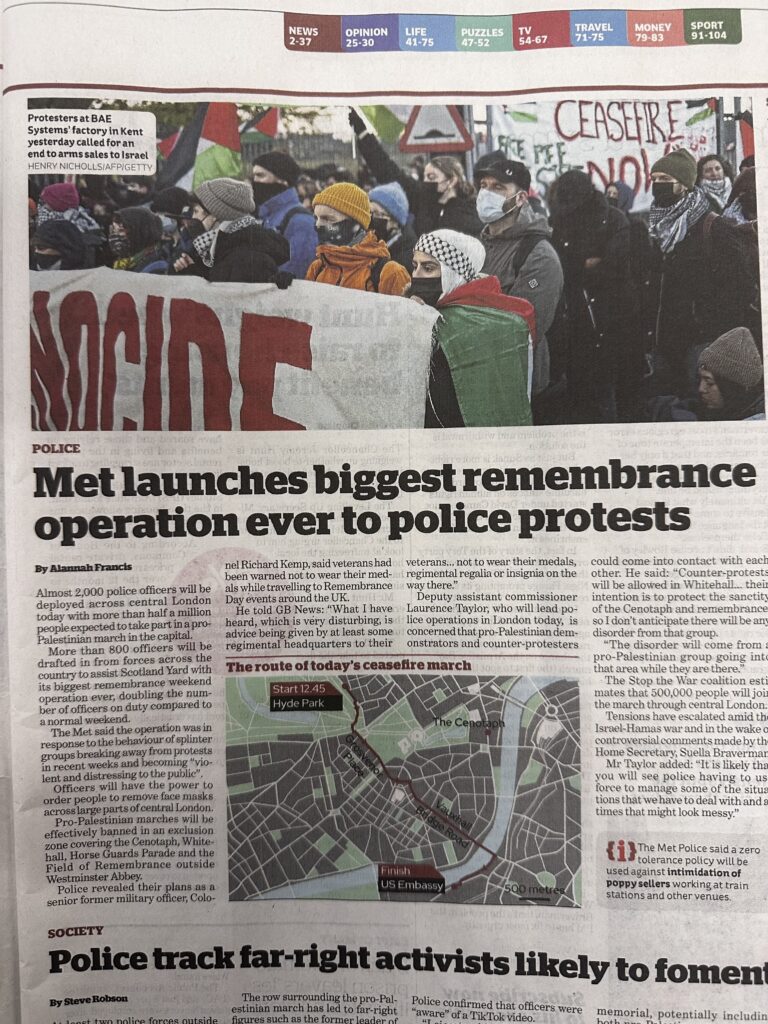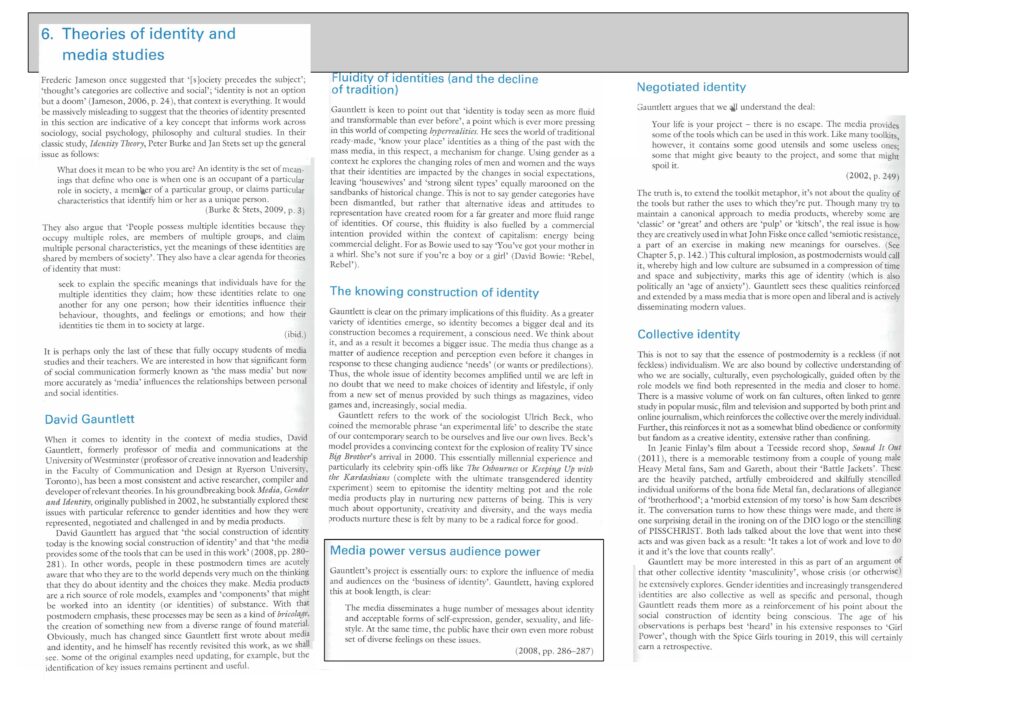In our previous blog post we explored the general rule of introducing a story by answering questions such as ‘who, what, when’ from the outset.
However, there are cases when this rule is not followed. Sensational, tabloid, ‘soft news’ reporting (on lifestyle, personalities, events) quite often focuses on details and atmosphere before proceeding into essential information.
See an example below:

This intro here answers the ‘when’ (11am) without even mentioning the date. The texts evokes literary accounts by emphasizing weather and atmosphere. The next paragraph employs colorful and poetic language through the use of the phrase ‘grey London skies.’ These modes of expression present the Royals are highly honorable figures. The melancholy of the weather ties with their mission to honor the memory of the dead. The headline contrasts this atmosphere of silence and awe with the ‘sound and fury’ of the pro-Palestine protesters. The Royals here are presented as the embodiment of high national ideals: patriotism, reserve and constrain. This allies with the overall conservative worldview of the newspaper and targets audiences who have similar ideas about British identity, public order and the sanctity of monarchy.
On the following page, this emotionally charged representations of the ritual mix with ‘gossipy’ information about the dressing style of princess Kate. This expands the appeal of this topic towards readers who might be not very politically conscious. The use of the close up photograph of the princess and the historical background of her ‘pin’ create an effect of ‘personalization.’ The readers are invited to consume the personal story of a public figure by foregrounding her aesthetic tastes, ‘elegance’ and emotion. All these elements are graphically depicted in both text and visuals. Politics becomes ‘celebrity’ news. It is the person that matters, not the institution or the ideology. In addition to inspiring sympathy for and glorification of the princess, this style of presentation might target a more diverse audiences that monarchists: fashion enthusiasts, women, gossip-fans. The entertainment value of the story supports but also overcomes its ideological positioning.


Keep in mind these conventions of ‘media language.’ These patterns of writing and visualizing construct a specific views of the world and cater for particular types of audiences. Royalist, traditionalists, ‘Middle England’ figures, women, sensationalist readers, fashion enthusiasts.











